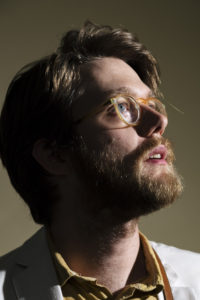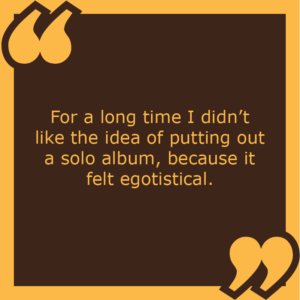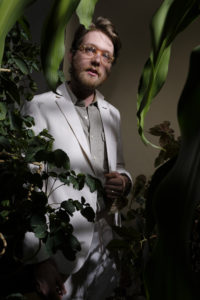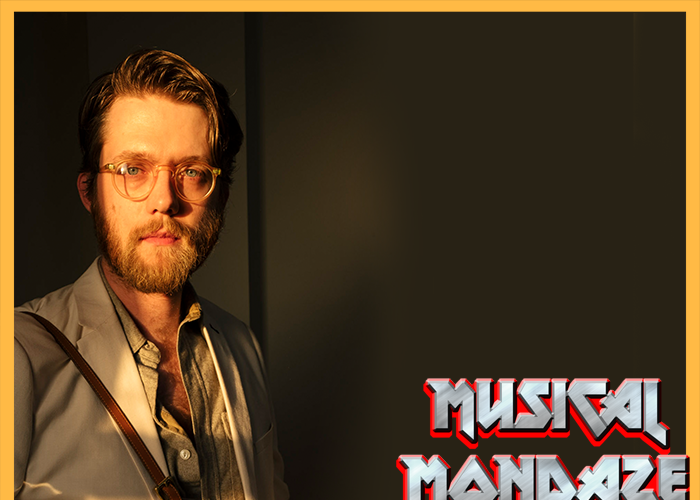
Yes, THE Vanilla Ice sang, “All right stop, collaborate and listen,” but it’s singer-songwriter Taylor Ashton who is doing all of the real-life collaborating and we’re the ones doing the listening, especially as it relates to his upcoming debut solo album, The Romantic, due to drop February 28 from Signature Sounds.
“I call The Romantic a solo album but in a big way it’s actually the most collaborative thing I’ve ever made,” he said in an exclusive interview with TrunkSpace. “It has 17 other musicians on it and they all bring something of themselves to it.”
We recently sat down with Ashton to discuss going solo(ish), tunnel reverb, and practicing the art of being non self-judgmental – or, at least, finding art in it.
TrunkSpace: What is your main objective as a songwriter? Is your creative output for you? Is it for us, the listener? Is it for a combination of the two?
Ashton: It’s a combination! My favorite feeling in the world is listening to a song that speaks to me, and that’s the feeling I hope people will have when they listen to the songs I write. So it’s for you, the listener, but it’s also for me, imagining myself in your shoes.
TrunkSpace: Can you envision a day where music is not a part of your life? If you weren’t writing, would you need another outlet to find an internal balance within yourself?
Ashton: I don’t think music will ever not be a part of my life. That said, I’m a visual artist as well, and I’ve always had to juggle that with music – so I guess I need both those outlets to balance myself anyway.
TrunkSpace: Your debut solo album, The Romantic, is set to be released on February 28th. What kind of emotions do you juggle with as you prepare to release new material into the world?
Ashton: This will be the 7th album I’ve sung my songs on, after four albums with Fish & Bird and two duo records with other songwriters, but it’s my first “solo” album so to speak. For a long time I didn’t like the idea of putting out a solo album, because it felt egotistical. I’m glad it’s taken me this long to get comfortable with it, because I’ve learned a lot from collaborating in different ways with different musicians over the years. It feels vulnerable! But good!
TrunkSpace: How much of your personal timeline is present on The Romantic? How far back do these songs go, and is it odd to revisit the emotions that spark particular tracks days, months or even years later?
Ashton: The initial sessions for the album took place in 2015, which was shortly after I moved to New York, and around that time, things were slowing down with my old band and I was processing the end of a relationship too. So listening to it now I see that it’s sort of the chronicle of leaving behind old support systems and discovering myself in a different context. When I first moved here, I didn’t have many friends and had no job. I survived for the first couple months off a check from a medical study I participated in just before moving, and when that ran out I made my living as a subway busker for a year or so. That was a really new way of making music and relating to an audience. It was really lonely and bleak sometimes, but on a good day it was pretty spiritual – the reverb in those tunnels is gorgeous and it can be amazing to connect with people in that direct way.
TrunkSpace: If someone sat down to listen to The Romantic front to back, what would they learn about you both as an artist and as a person?
Ashton: I hope they learn more about themselves!
TrunkSpace: What are you most proud of with the new album?
Ashton: I’m really happy that it sounds cohesive, even though there were some pretty big gaps in the recording of the album. Other projects and life things took my energy for certain periods of time – I made a duo record with my pal Courtney Hartman, for example – so when I put my attention back to the solo album, I had a half-finished bunch of sessions and thought I would have to scrap everything and start over. Alec Spiegelman rescued me from that place last year – we took the 2015 sessions and recorded new songs and did overdubs on the new and old sessions to the point where I started to forget what was old and what was new. Jacob Blumberg recorded the first sessions, and then he came back to mix the whole album, so that helped too.
Short answer is that I am proud to know Alec Spiegelman and Jacob Blumberg (who share co-production credit on the album), and the rest of the musicians on the album who let me borrow their talents to make my songs sound great.
TrunkSpace: We love music here, but even more than that, we love really great lyrics – the kind that make you delve deeper as a listener. We think there is a wonderful smorgasbord of words and emotions on this album, but for you, what is a particular line that stands out that you’re happy with and why?
Ashton: I came up with the chorus to “If You Can Hear Me” one time when I was really lonely and really sleep-deprived, and I love singing it because it’s got a healing message and it’s also abstract. Sometimes I don’t know right away if I like something I’ve written, but this chorus struck me as finished the second it plopped out of my brain:
“If you can hear me, give me a sign
there’s a receiver in your heart of mine
If you’ve got a problem, that’s what I’m here for,
Wrap yourself up in my arms of yours”

TrunkSpace: Where are you hardest on yourself as an artist and how do you overcome those self-critical insecurities?
Ashton: I have a Mount Rushmore of songwriters in my brain: Tom Waits, Joni Mitchell, Elliott Smith, Bjork, Randy Newman, Bill Withers, Thom Yorke etc, etc, etc… and I have had a bad habit sometimes of judging every melody and every lyric as it comes out of my brain, imagining if one of these idols of mine would have written it or liked it. I’m still learning and re-learning that it’s mostly debilitating to be that judgmental in the creative process. So I do an exercise where I try to write something with the explicit intent of never playing it for anybody, so I can practice being non-judgmental. Every so often in that exercise I trick myself into writing something I like, and that’s honestly where most of my finished songs come from.
TrunkSpace: We were first introduced to your music after hearing you mentioned during a performance by The Brother Brothers. Creatively, how important are collaborations to you? Does the creativity of others spark your own creativity?
Ashton: Oh that is sweet! I love those guys. David and I actually just finished a co-write that I think is going to be on their next album.
Yeah, collaboration is everything! I call The Romantic a solo album but in a big way it’s actually the most collaborative thing I’ve ever made. It has 17 other musicians on it and they all bring something of themselves to it – almost all of the musicians on the record are songwriters themselves and they’re all people whose writing I’ve been really inspired by. I do really feed off of that.
TrunkSpace: If you sat down with your 10-year-old self and gave him a glimpse of his future, would he be surprised by where his musical journey has taken him thus far?
Ashton: My 10-year-old self would be surprised that I’m playing music at all! As a kid I always thought I would just be drawing and never doing anything else.
TrunkSpace: Time machine question. If you could jump ahead 10 years and get a glimpse of what your career looks like a decade from now, would you take that journey? If not, why?
Ashton: Oooh, that’s so tempting but it also sounds like it would end in some Time Traveler’s Wife style tragedy. Maybe if my future self could send me a single Morse code message from the 5th dimension, like at the end of Interstellar, that would be cool. Maybe my future self could give me the hook to the song that’s going to get into an apple ad and put my future children through college, something like that. I’d take that.
The Romantic will be available February 28 via Signature Sounds. His latest single, “Nicole, is available now.


